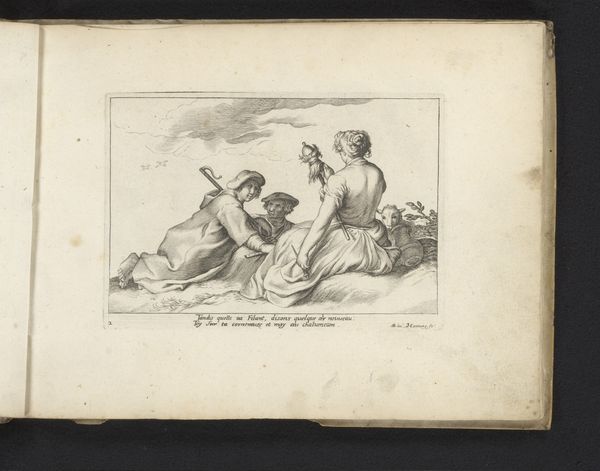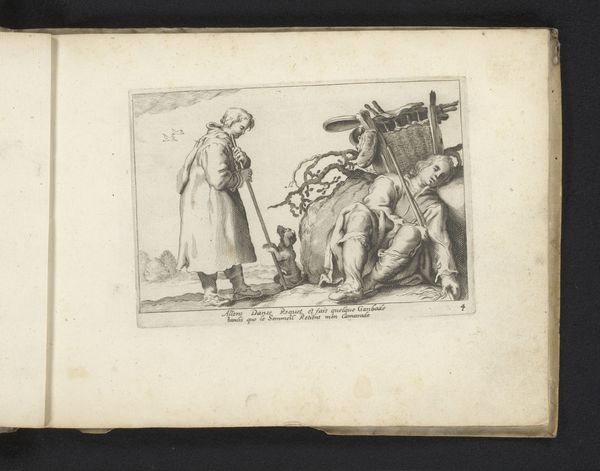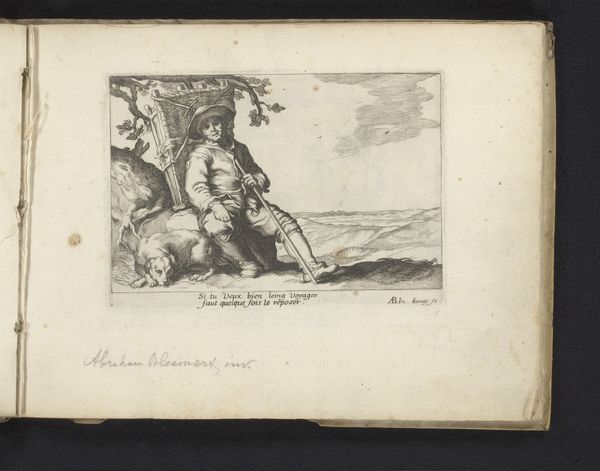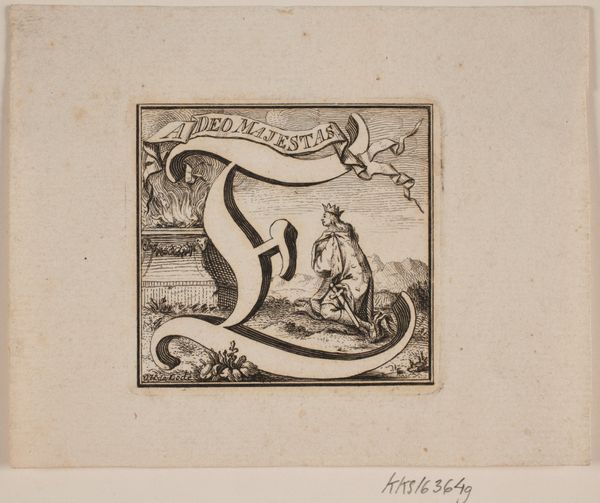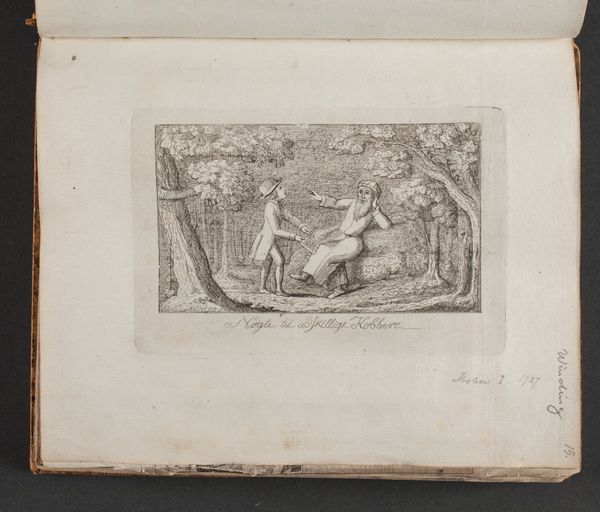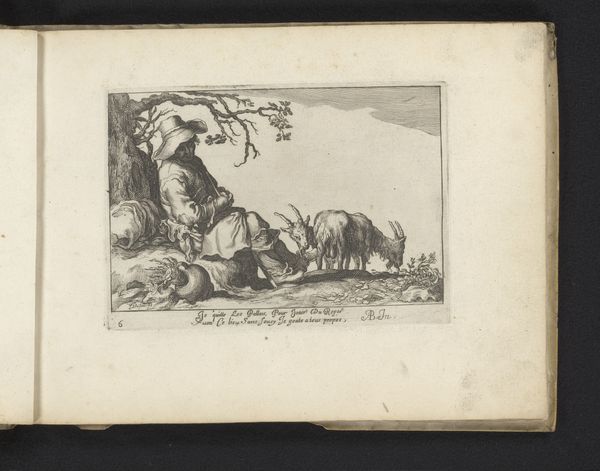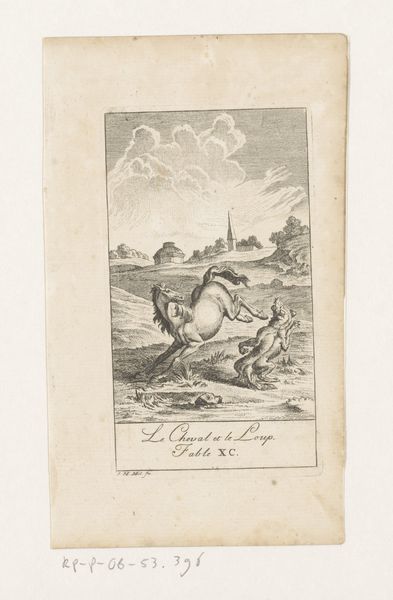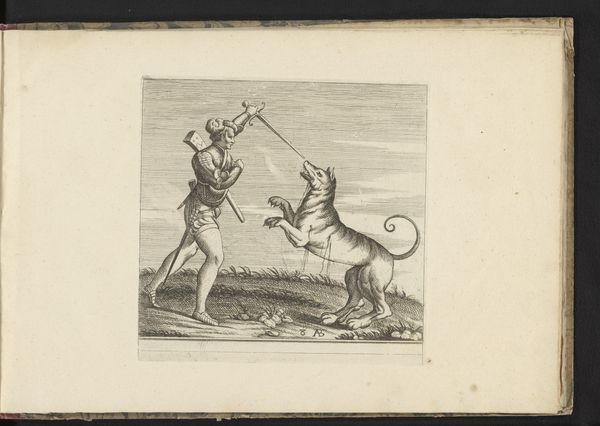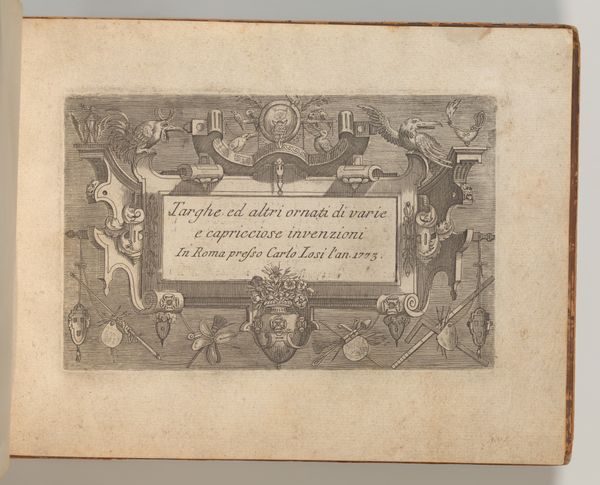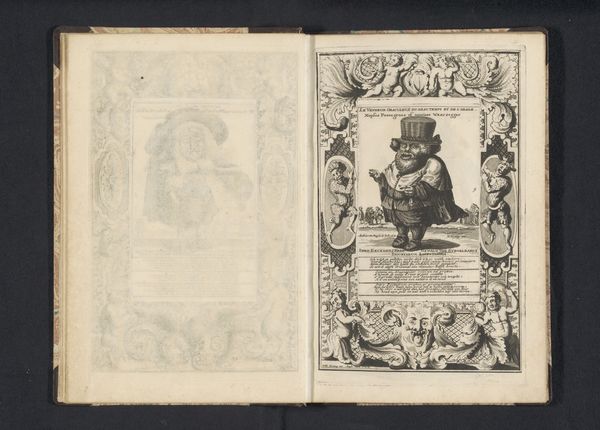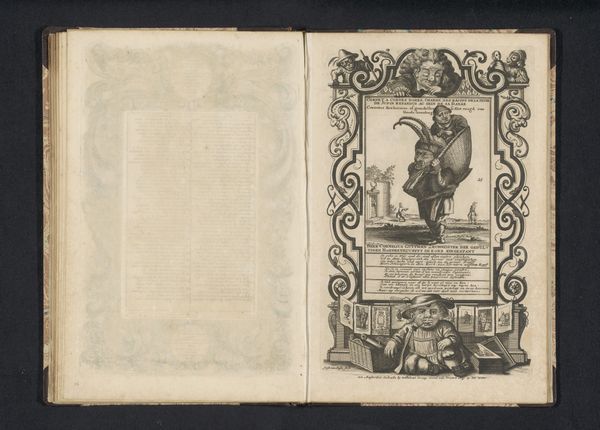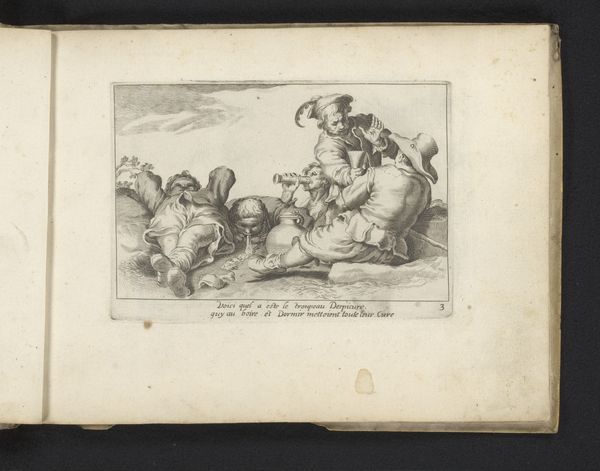
drawing, engraving
#
drawing
#
aged paper
#
baroque
#
sketch book
#
landscape
#
figuration
#
personal sketchbook
#
sketchwork
#
pen-ink sketch
#
pen and pencil
#
line
#
pen work
#
sketchbook drawing
#
genre-painting
#
storyboard and sketchbook work
#
sketchbook art
#
engraving
#
realism
Dimensions: height 111 mm, width 157 mm
Copyright: Rijks Museum: Open Domain
Curator: This is "Liggende man op een rotsblok," or "Reclining Man on a Rock Block," a drawing from sometime between 1606 and 1669, currently residing here at the Rijksmuseum. Editor: My immediate impression? Exhaustion, bordering on collapse. The figure is completely draped over the stone, all angles soft and yielding. You can almost feel the weight of his limbs. Curator: And look closely—it's an engraving, meticulously crafted. We can speculate about the economics of engraving during this period: the workshops, the apprenticeship system, the role of this kind of print in disseminating visual information across Europe. Who was commissioning this type of work? Editor: Beyond its existence as a commercially viable art, this image seems steeped in a kind of philosophical weariness. Notice how the rock mimics a gravestone and consider the presence of the inscription. It talks about how, when we are possessed by an ill, forgetting is the remedy; and also, only rest can bring relief from work. Is it simply reflecting the toils of the average 17th century man? Or pointing towards some other kind of burden? Curator: The paper itself, aged and textured, becomes part of the story. It underscores the piece’s function as a mass-produced object subject to decay, but that's integral to it conveying its message across so many years. How many hands have held this particular engraving, pondering that message you so eloquently interpret? Editor: I wonder if the choice of depicting him reclining on a "rock block," as the title specifies, rather than just bare earth is significant. A natural formation worked by human hands gives it, yet again, an air of melancholy. This may well just be some farmer at the end of the day - the inclusion of a sort of bottle and staff would indicate this. Yet, here, rest looks like something earned, carved out of hardship. Curator: I find myself considering the physical act of its creation; the fine motor skills and the sheer volume produced during the period. In essence, this drawing, though depicting a man at rest, represents hours of work, a commodity traded. Editor: So while you consider the means of production, I will be stuck in a thought spiral regarding whether or not to identify that expression with feelings I can directly understand, or if that would just make this art 'timeless' in a simplistic, anachronistic way. Curator: Perhaps both interpretations can coexist. Thanks for highlighting the work, the man and the weariness.
Comments
No comments
Be the first to comment and join the conversation on the ultimate creative platform.
